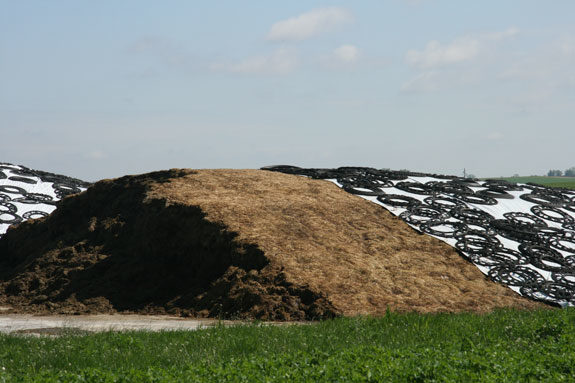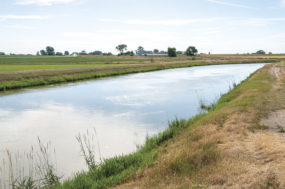Losses can vary based on the silo type and level of management, according to research at the University of Wisconsin. Dry matter (DM) loss in a typical bunker silo can range as high as 43 percent, depending primarily on whether it is covered.
Well-managed, covered stacks or piles can have similar losses, but if poorly managed, losses can exceed 50 percent. Bags provide the lowest risk of loss, topping out at 14 percent, because of the reduced surface area during storage and feedout. Following are the most common sources of loss.
• Filling is associated primarily with continued plant cell respiration and microbial respiration. Losses can reach 6 percent.
• Seepage is usually minor (less than 1 percent) if the crop is ensiled below 72 percent moisture.
• Gaseous is mostly carbon dioxide loss resulting from the fermentation process.
• Surface, or top spoilage, is the most visible loss and can range as high as 24 percent.
• Feedout often goes unnoticed by most producers, even though it can reach 15 percent. Pioneer research shows aerobic losses during feedout can be four to five times greater than fermentation losses.
Reducing the risks
Given the high input prices to produce silage crops and the ever-rising feed costs for beef and dairy herds, double-digit silage losses are simply unacceptable.
Although some weather-related losses are unavoidable, far too many producers are suffering serious losses from factors that can be managed effectively.
Minimize storage losses with proper silo design, good silage management and the use of a research-proven inoculant. The main management factors within a producer’s control are:
• Forage maturity and moisture at harvest: Harvest maturity is key to ensure adequate fermentable sugars for silage bacteria and maximum nutritional value for livestock.
• Ensiling methods: The depth of the packing layer is one of the most important contributors to silage density. Pack no more than 6 inches of silage at a time.
• Type of storage structure: Seal bunker silos with an airtight cover to prevent surface spoilage losses from penetration of air and rainfall into the silage mass.
• Choice of silage additives: Certain silage additives can increase aerobic stability and reduce feedout losses, such as Pioneer® brand 11C33 corn silage inoculant, which is designed specifically to improve both fermentation and aerobic stability. This product combines lactic and acetic acids, which is shown to be more effective in inhibiting yeast than lactic acid alone.
• Storage feedout methods: Losses occur during the actual feedout and from refusal and wastage by animals. Maintaining anaerobic conditions within the storage structure are critical for long-term silage storage.
• Feed bunk management: Bunk management systems are most efficient when they prevent cyclic intake patterns and overconsumption. Distribute feed consistently and accurately.
• Proper ration formulation: A properly formulated ration supplies the correct amounts of nutrients to assist cattle in achieving the desired level of production. Properly managed silage can reduce your need for added starch or protein in the ration.
Squeezed by a slow economy and unpredictable weather, producers need to pay close attention to the factors they can control. Going the extra mile to reduce silage losses makes sense, both economically and nutritionally.
Remember, silage management is a matter of subtraction. Reducing the amount of silage lost is one of the best ways to add to the bottom line. FG

Steve Soderlund
Livestock information manager
Pioneer Hi-Bred
steve.soderlund@pioneer.com
PHOTO
TOP RIGHT: Photo by FG Staff.










